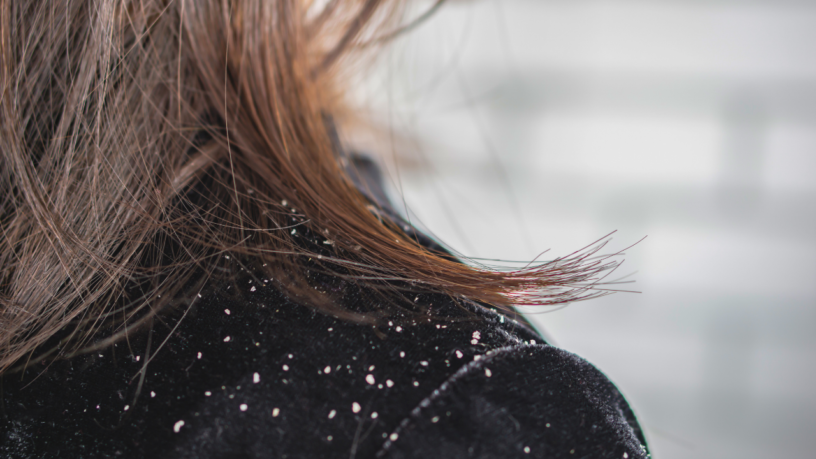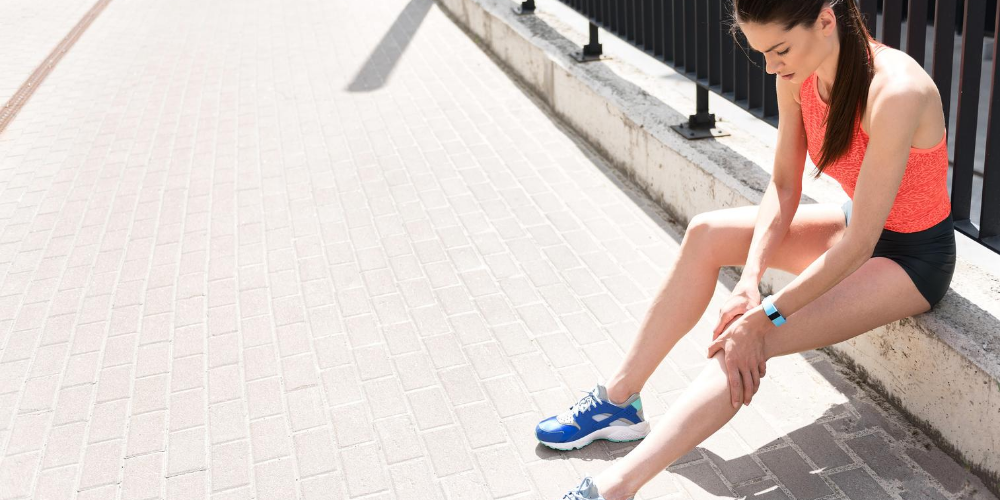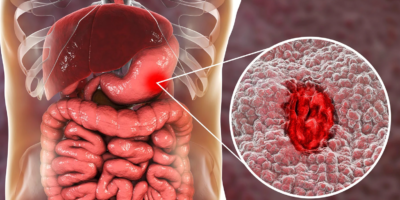In fact, dandruff affects half of us. Dandruff can also cause itching and redness of the scalp. Heat can worsen the condition. Men have it more often than women. For many people, the scalp becomes less flaky with age. Seborrheic dermatitis causes more severe dandruff. The affected skin and scalp become inflamed, very flaky, and greasy looking. Other disorders—psoriasis, eczema, fungal skin infection, and head lice — can cause scalp flakiness. A particular fungus (Malassezia) has now been associated with dandruff, seborrheic dermatitis, and cradle cap. It seems to thrive on excretions from the scalp’s oil glands.


1. Sesame Asparagus
How it works: Low body levels of zinc and certain B vitamins can trigger dandruff. Asparagus and sesame seeds contain both zinc and vitamin B. Leafy green vegetables are excellent delivery systems for these important nutrients, as well as nuts and seeds, including pine nuts, pecans, and pumpkin seeds.
- PREPARATION:
- 1 bunch asparagus, thick ends removed
- 1 tablespoon (15 ml) sesame oil
- Freshly ground black pepper
- 1 teaspoon (3 g) sesame seeds
- DIRECTIONS:
Preheat the oven to 450°F (230°C, or gas mark 8).
On a baking sheet, toss the asparagus spears with the sesame oil. Sprinkle with pepper to taste. Roast the asparagus for 5 minutes and then turn the spears and sprinkle with the sesame seeds. Roast for 5 minutes more until the asparagus is tender and just browned. Serve immediately.
- YIELD: 02 SERVINGS
2. Tea Tree Scalp Treatment
How it works: Tea tree oil has antifungal properties. Flaxseed oil contains omega-3 fatty acids, which reduce inflammation that can accompany dandruff. If you have the type of dandruff caused by dry skin, the oil may help.
- PREPARATION:
- 2 to 3 drops tea tree essential oil
- ¼ cup (60 ml) flaxseed oil
- DIRECTIONS: Drop the tea tree essential oil into the flaxseed oil and blend. Apply the mixture liberally to your scalp before bedtime. Wrap your head in a clean towel or cover your pillow with the towel to protect it. In the morning, shampoo and rinse your scalp thoroughly.
- YIELD: 01 APPLICATION
3. Rosemary Scalp Wash
How it works: Vinegar contains acetic acid, which is antifungal. Rosemary is an excellent antibacterial and antifungal agent.
- PREPARATION:
- 1 cup (235 ml) apple cider vinegar
- 2 tablespoons (3 g) fresh rosemary leaves
- DIRECTIONS: Place the vinegar in a small pan and heat until nearly boiling. Remove from the heat, stir in the rosemary, cover the pan, and steep for 10 minutes. Strain the mixture and discard the herbs. Pour into a clean empty jar or bottle to store. After every shampoo, mix ¼ cup (60 ml) of the solution with 2 cups (475 ml) of water. Use it to rinse your scalp thoroughly.
- YIELD: 04 APPLICATION
4. Tea Tree Oil Shampoo
How it works: Tea tree oil is active against some species of Malassezia, the fungus associated with dandruff and seborrheic dermatitis. One study found that a shampoo containing 5 percent tea tree oil significantly improved dandruff relative to placebo. Although this study did not reveal any side effects, some people are allergic to the essential oil of this plant. If this shampoo irritates your scalp, stop using it.
- PREPARATION:
- ¼ cup (60 ml) liquid castile soap
- ¼ cup (60 ml) water
- ½ teaspoon olive or flaxseed oil
- 10 to 20 drops tea tree essential oil
- DIRECTIONS: Place all the ingredients in a sizeable, clean squeeze bottle with a secure top. Cap and shake to combine. Part your hair in small sections. Dab the shampoo onto one small area at a time. Massage the shampoo into your scalp. Rinse.
- YIELD: 4 TO 6 APPLICATION
- NOTE: You can also use this mild mixture as a general skin wash.
5. Honey Hair Mask
How it works: Honey inhibits Malassezia fungi, which means it may be helpful in treating dandruff and seborrheic dermatitis, although studies have yet to investigate that possibility.
- PREPARATION:
- ½ cup (170 g) honey
- ¼ cup (60 ml) olive oil
- DIRECTIONS: In a small, microwave-safe bowl, mix the honey and olive oil. Heat the mixture in the microwave on high for about 10 seconds, and then allow it to cool. Gradually work the mixture onto your scalp until it is covered. You can also coat your hair with this mask to make it shine. Cover your scalp with a shower cap or warm, damp towel for about 30 minutes. Remove the wrap and rinse well.
- YIELD: 01 APPLICATION
6. Brush Up Relief
How it works: This brushing action carries oil from your scalp, where it causes dandruff, along your hair strands. While it fights dandruff, the repetitive brushing also brings out the shine in your hair.
- PREPARATION: A good brush
- DIRECTIONS: Starting at your scalp, brush from scalp through the hair with firm strokes. Repeat until you’ve covered the entire scalp and corresponding strands.
- YIELD: DAILY APPLICATION
7. Yogurt Boost
How it works: If a case of dandruff is caused by a fungal infection, yogurt can help fight it. It contains friendly bacteria that discourage fungal infections such as Malassezia. The citric acid in lemon juice is also antifungal.
- PREPARATION:
- 1 cup (230 g) plain yogurt
- 1 tablespoon (15 ml) fresh lemon juice
- DIRECTIONS: In a small bowl, mix the yogurt and lemon juice. Thoroughly massage the yogurt mixture into your scalp. Cover your scalp with a shower cap or warm towel for about 30 minutes. Remove the wrap and shampoo.
- YIELD: 01 APPLICATION
8. Cradle Cap Relief
How it works: Gentle massage increases circulation for smooth skin and also helps remove the dead, scaly skin of the cradle cap. The mineral oil and warm cloth help soften especially stubborn scales. The key ingredient in castile soap is skin-softening olive oil combined with alkaline sodium hydroxide. It has no harsh artificial additives to irritate the baby’s tender scalp.
- PREPARATION:
- Pure Castile liquid soap
- Mineral oil (optional)
- DIRECTIONS:
Gently massage your infant’s scalp with your fingers to help circulation and loosen scaly patches. Shampoo with the castile soap, rinsing the head thoroughly. Do this daily until the scaly patches disappear; then shampoo twice weekly.
If your child has a head of hair, brush it with a clean, soft brush after each shampoo and several times during the day.
For stubborn scales: To help loosen especially stubborn scales, put mineral oil on your fingertips and massage it into your baby’s scalp. Wrap a warm, wet cloth around your child’s head for about an hour. (Alternate two cloths, changing one cloth for a warm cloth each time it starts to cool; you must keep the wrap warm to maintain the baby’s body heat.)
- YIELD: DAILY APPLICATION UNTIL THE SCALES DISAPPEAR
- NOTE: Contact your doctor if the scales continue; you may need a prescription cream.
Fact or Myth?
- DRY SKIN CAUSES DANDRUFF. That depends. In seborrheic dermatitis, the skin and scalp are oily and the oils can favor the growth of a fungus called Malassezia. Frequent shampooing can improve dandruff but could worsen dry scalp. However, dry skin and scalp account for the fact that some people have flakier scalps in winter.
- IF YOU HAVE DANDRUFF, YOU SHOULD WASH YOUR HAIR LESS OFTEN. Actually, if you shampoo infrequently, the dead skin cells start to build upon your scalp, worsening dandruff. However, if dry skin is to blame, you want to find a happy medium—perhaps shampooing every other day or every third day.
Lifestyle Tip
- If your dandruff appeared after you tried a new shampoo, switch to another, milder product—perhaps a fragrance-free, hypoallergenic shampoo. The same goes for other hair products. They can either irritate the scalp or lead to a buildup of oil. Hair dyes and permanents can be very irritating.
- Go outdoors without a hat for about 15 minutes or so. Sun exposure helps manage some of the skin conditions that can cause scalp flakiness.
- Avoid stress and fatigue, which can worsen seborrheic dermatitis. Get a minimum of 8 hours of sleep. When feelings of stress envelop you, close your eyes, breathe in deeply for four long counts, hold your breath for seven long counts, and release your breath for eight long counts. Repeat this four times and find yourself filled with a sense of well-being.






Leave a Reply